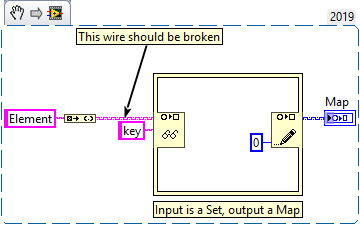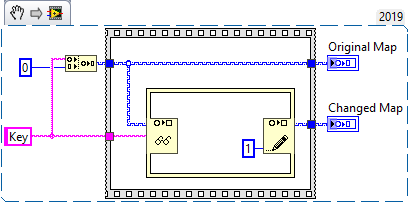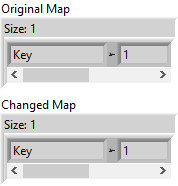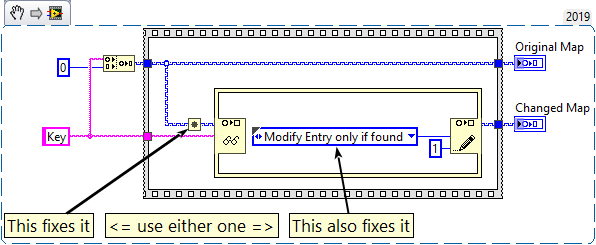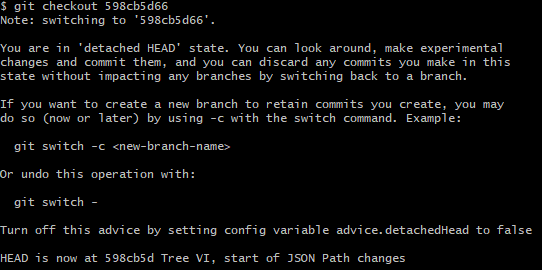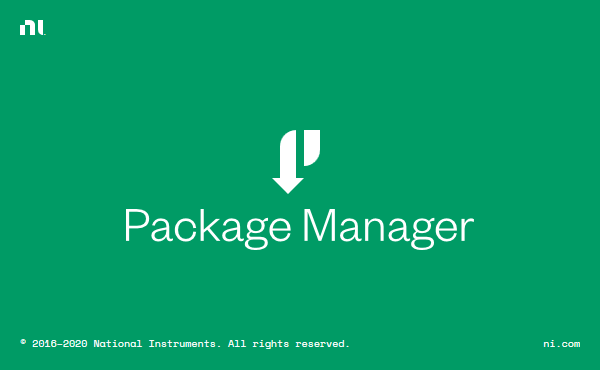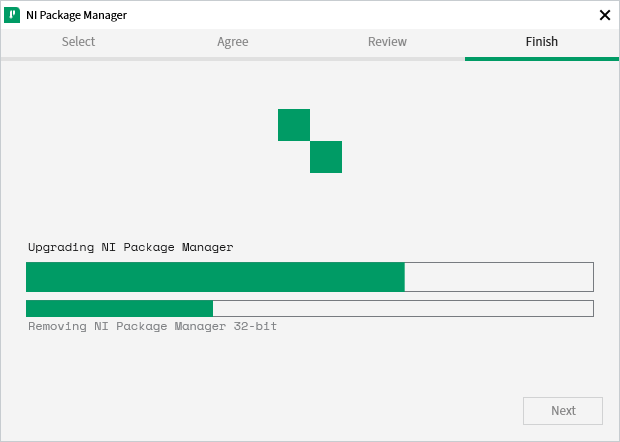-
Posts
720 -
Joined
-
Last visited
-
Days Won
81
Content Type
Profiles
Forums
Downloads
Gallery
Everything posted by LogMAN
-
I agree, the window is most likely built-in so there is no way to change it. Not sure if this is useful, but there is a way to customize the behavior of the override retooler: https://forums.ni.com/t5/LabVIEW/Use-of-MUST-OVERRIDE/m-p/3286047/highlight/true?profile.language=en#M960301 This could be useful if you want to change the general outcome of the override operation (i.e. add an error case, remove the Call Parent function, etc.).
-
Here are my points: By default it should list about 15 to 20 of the most recently updated packages. That way even new packages get promoted and it doesn't feel "static". I want to select between a few high level categories (i.e. Frameworks, Utilities, Drivers). I want to specify the version of LV that the package should support (it should take older package versions into account). Each package should provide some key facts: Name, version, author, summary, picture, rating, price, download count, download button. I want to open the details page if I find a package that I might like. I want to scroll the page, not a frame inside the page. In my opinion there is no "right" way to browse for packages, so it should rather provide options that users are willing to use and should make some educated guesses on what default settings and key facts are important (maybe do UATs?). Since there are already a few links to our favorite pages, here is one of mine. It is for a game, but I think the "card" design could work for GCentral as well: https://mods.factorio.com/
- 8 replies
-
- 3
-

-
- gcentral
- userexperience
-
(and 3 more)
Tagged with:
-
Here it is, CAR #1103428 I should probably mention that this is expected to be fixed in LV2020 SP1. It doesn't sound like there will be a fix for LV2019, unfortunately.
-

Down-save from 2019 to 2015 crashes
LogMAN replied to Michael Aivaliotis's topic in Development Environment (IDE)
I just saved from 2019 to 2015 without any problems, including Error Ring. As @Yair suggested, perhaps mass compiling vi.lib fixes it? -
Here is another bug I discovered in LV2019+ which reliably crashes LV. Simply connect a set to the map input of the Map Get / Replace Value node on the IPE: This VI is executable in LV2019 SP1 f3, which means that you can actually build that into an executable without noticing. I have reported this, but there is no CAR yet.
-
I want to share a bug that exists in LV2019+ that results in data being overwritten in independent wire branches when changing maps with the Map Get / Replace Value node of the IPE. Here is the code: This should produce two maps <"key", 0> <"key", 1> But the actual output is <"key", 1> <"key", 1> As it turns out, Map Get / Replace Value breaks dataflow. There are two workarounds for this issue. Use the Always Copy function Wire the Action terminal of the write node This was reported to NI with the bug report number #7812505.
-
- 1
-

-
I agree with @hooovahh. This is likely an issue with Parallels. I don't have a VM to try this, but I assume that your cursor leaves the VM for a brief moment (the "stuttering"), which causes this strange behavior. Parallels probably buffers the cursor info and restores it in a way that is incompatible with LV. Does Parallels allow you to "capture" the cursor, so that it can't leave the VM without pressing some master key? I can imagine this fixes the issue.
- 11 replies
-
- drag and drop
- diagram
-
(and 3 more)
Tagged with:
-
I have never seen such behavior in any version of LabVIEW. That said, I use 32 bit. Perhaps it's specific to 64 bit? If Windows scaling is enabled, try disabling it. I had strange behavior because of that in the past.
- 11 replies
-
- drag and drop
- diagram
-
(and 3 more)
Tagged with:
-
Sounds like the compiler is busy figuring things out. Just tested it on the QMH template and it is as fast as always (1-2 seconds). That said, the template is not very complex. Do you get better results with a simple project like that?
-
Whichever system you choose will require a lot of time and effort to implement by the whole team. Don't think that you can simply choose a tool that "feels right" and expect everyone to accept your opinion. I made that mistake and had to rethink my strategy after a disaster of a start (only one of us adopted the new system - me ). You also don't want to be responsible for everything, so it's best to have the majority on your side before you enforce a new system. Your main focus should be on your workflow and your requirements to decide which tools are right for you. For example, do you have small projects or big? how many developers work on a single project? are your projects deep (multiple projects in separate repositories), wide (multiple projects managed in a single repository), or flat (single repository)? do you always have access to your servers when developing? do you have a project leader, or is each project managed by a single head-developer? who are your stakeholders and which kind of reports, documents, and access rights to they need? how are bugs reported to your team? do you need to give access to your source code and bug trackers to third-parties (external)? what kind of development cycle is used for your projects? do you need to integrate additional platforms or tools (i.e. CRM)? While it is kind of easy to state those questions, the answers are not that simple to give. I still struggle to answer some of those (among other) questions and simply made gut-decisions where necessary. Also, don't forget to include your team in this! Simple questions like "Where do you struggle the most?" do wonders if you care to listen. Here is our tooling for reference: We use Git for source control, Jira for bug tracking, planning, and reporting, and Confluence for the wiki. Our developers are free to use any client they want (i.e. Sourcetree), as long as they adhere to the commit guidelines. We still don't have a working CI/CD solution, so each developer builds their own project (or in case of larger projects, the head-developer). Unfortunately LV is exceptionally slow in this area, especially for large projects. We are actually at the edge of what we consider acceptable. In the past we used ZIP files, later SVN. I don't think I need to explain why we went away from ZIP files. SVN, however, we discarded because it wasn't the right fit. Occasionally we have to change programs on-site, without server access, and want to be able to commit changes. SVN simply is too much effort for such a workflow. You need to remember to checkout and lock files before you travel and hope that nobody breaks the lock. Lessons learned from using SVN: Don't trust your colleagues 😱
-

Git can't be this terrible, what am I doing wrong?
LogMAN replied to drjdpowell's topic in Source Code Control
Nice, that message did not exist in the version of Sourcetree I used a few years ago. Glad to know they keep improving. Still, some genius decided to make "Yes" the default answer... -

Git can't be this terrible, what am I doing wrong?
LogMAN replied to drjdpowell's topic in Source Code Control
Let's also not forget that Git was originally invented by Linus Torvalds to manage the Linux kernel with thousands of contributors, commits, and branches being done every day. Although my projects are slightly below that complexity, Git does manage (barely) This is the fault of tools like SourceTree. Here is an example of Git moving away from a detached head: Again, they provide you with the necessary command template to prevent you from loosing track of your changes. I cannot stress enough how much better the command line interface is compared to any of the tools (at least the ones I have tried). -

Git can't be this terrible, what am I doing wrong?
LogMAN replied to drjdpowell's topic in Source Code Control
This actually sums it up quite nicely 😋 -

Git can't be this terrible, what am I doing wrong?
LogMAN replied to drjdpowell's topic in Source Code Control
Atlassian has comprehensive (and visual appealing) documentation on Git. https://www.atlassian.com/git/tutorials https://www.atlassian.com/git/tutorials/atlassian-git-cheatsheet Unfortunately Git has a lot of commands, most of which you'll probably never use. I suggest you play around with it to get used to the workflow and be prepared for your daily job. Just don't do stuff like "git push -f" and you should be fine. You might find this worth reading: https://sqlite.org/whynotgit.html There you have it, your problem is not Git, it's the tools. Have you ever tried the command line? In my experience, there are many tools that work well with some aspects, but fail miserably at others. They only get you so far before you need some command line Voodoo to fix the "unfixable". Eventually you'll get used to the command line 🤷♂️ (I lost this battle a long time ago) This is the same reason why I abandoned SourceTree a few years back. Tools like that only give you access to a subset of instructions and they don't even provide ways to undo bad decisions. To be fair, you do actually get a big warning message (which nobody seems to read, including me): The command line version of this is much more helpful in my opinion, as it even teaches you some new commands. There is also no way to mistake it with the normal output. -

Not getting LAVA forum notification emails
LogMAN replied to Jim Kring's topic in Site Feedback & Support
I do actually receive emails from LAVA. -
Wow, this is good news! I'll give it a try. Point taken, I was going to post on the VIPM forum but then this thread happened and I couldn't resist... You can also disable the VIPM Service in the Task Manager under Startup. That said, I would like this to be opt-in or at least opt-out. Maybe on first start or during installation.
-
You can specify a destination on the Source File Settings page of your build specification. The default is "Same as caller". I assume your plugin is set to a custom destination, but your support files aren't, so they are put in the same folder as the caller. If you explicitly set the destination for your support files to the application executable, it will place them inside the executable.
-
I agree, that feature should be opt-in and the logins are a bad joke. Also, the installer creates a task for the Task Scheduler without consent. This is prevented by our IT policies and ultimately fails the installation - silently for NIPM and with an error message for the offline installer. VIPM 2019 it is 👍
-

What do you think of the new NI logo and marketing push?
LogMAN replied to Michael Aivaliotis's topic in LAVA Lounge
It is growing on me too (with exceptions mentioned before). It actually feels refreshing in some sense, which is probably what they intended. It seems to me that they have totally forgotten about their existing customers. I actually haven't received any invitation, message or notification from NI about any of this (did anyone?). We are the ones that are most excited to use their products now and that doesn't seem to be worth anything. We are also the ones who are passionate about sharing our knowledge and excitement with the next generation of engineers. VIWeek, LAVA, LabVIEW Wiki, OpenG, the Idea Exchange and many more initiatives are prime examples of this. It is very easy for excitement to turn in to frustration if you don't know what is coming next. Don't get me wrong, I'm a strong supporter of NI, LabVIEW and anything that comes with it and I sincerely hope that I can continue to do so for the next decades. I'm just frustrated that so many exciting new things are "dumped" in a way that make me feel left out. -

What do you think of the new NI logo and marketing push?
LogMAN replied to Michael Aivaliotis's topic in LAVA Lounge
About 35 minutes of people talking about how awesome everybody is (for some reason nobody mentioned me 😢). At 35:30 they finally address the new design. At 44:00 they talk about a six year commitment for the new roboRIO controller (whatever that is) for the FIRST robotics competition, financial support for students, equality and inclusion - quite important messages these days. At 45:56 they announce a campaign to "put a lens on 100 game-changing breakthroughs" (collected via Twitter). They will post the best ones here (one per week). The last 5 minutes are NI employees from all over the globe. Pretty much what you would expect from marketing material 🤷♂️ The new design probably makes green-screen capture easier. -

What do you think of the new NI logo and marketing push?
LogMAN replied to Michael Aivaliotis's topic in LAVA Lounge
-

What do you think of the new NI logo and marketing push?
LogMAN replied to Michael Aivaliotis's topic in LAVA Lounge
Thanks for the heads-up. I actually limited access to *.ni.com, specifically, so I should be fine.


